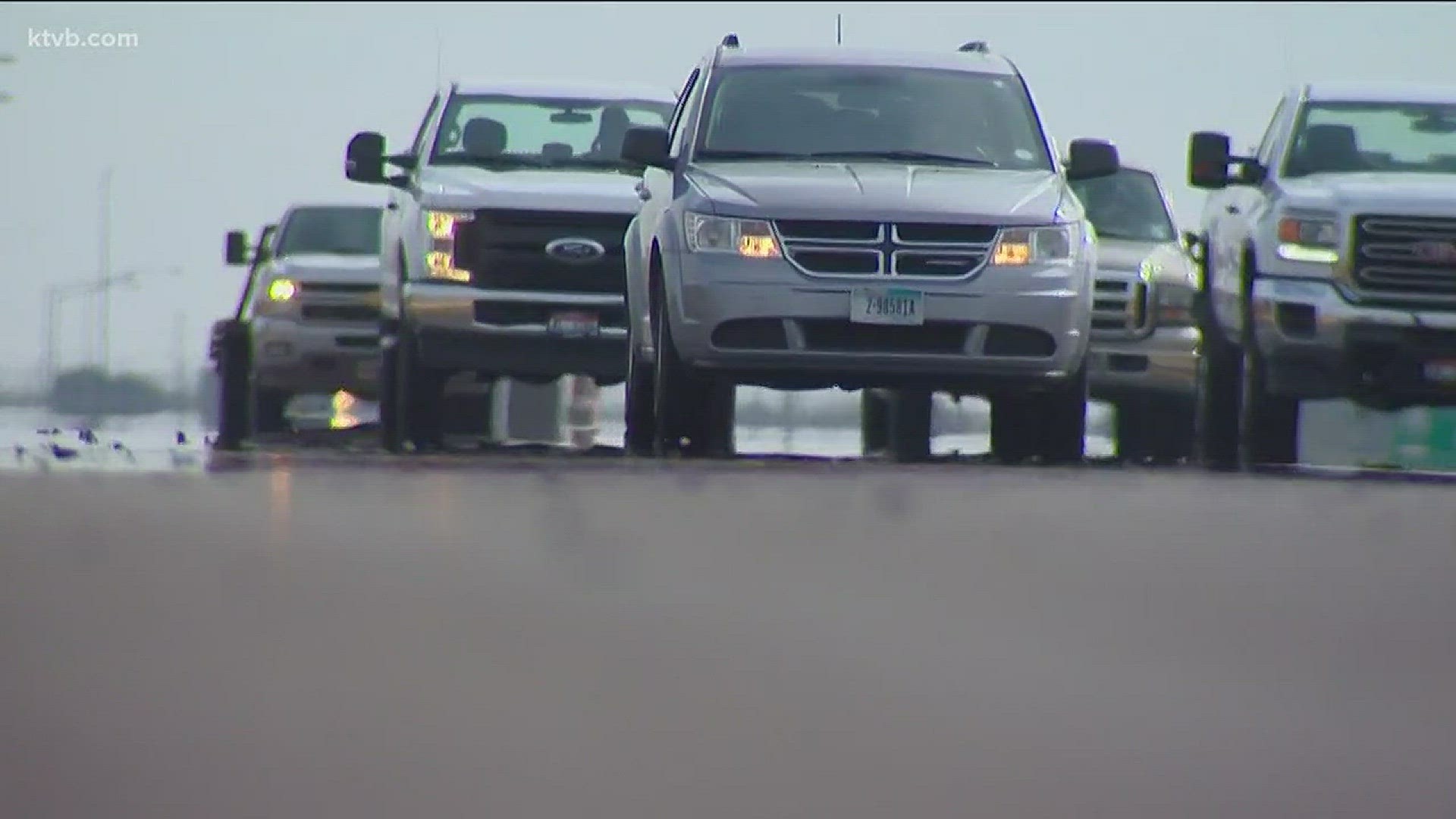The number of vehicles traveling along I-84 in Canyon County every day has increased by about 30,000 over the last decade.
"We have half a dozen cities that have doubled in population since 2000," said Carl Miller, with the Community Planning Association of Southwest Idaho (COMPASS). "We anticipate over one million people by 2040."
Miller helps COMPASS determine where growth is happening and how to alleviate traffic issues.
"It's difficult to keep up with the new growth and the traffic," said Miller. "There's a lot of planning that goes into this both with widening roads and other services like public transportation."
Miller, and his team, have identified 33 needed transportation corridor improvements and projects. Below are the top five:
1. Interstate 84 (Centennial Way Interchange to Franklin Boulevard Interchange)
2. State Highway 44/State Street High Capacity Corridor
3. U.S. Highway 20/26 (Chinden Boulevard) (Middleton Road to Locust Grove Road.
4. State Highway 55 (Snake River to the City of Nampa)
5. Regional park and ride lots
The Idaho Department of Transportation works closely with COMPASS. Vince Trimboli is ITD's Communication Manager.
"We rate our roads from A to F," said Trimboli. "F is the most congested."
Probably not surprisingly, the biggest "F" is along I-84. Trimboli says they have $150 million in grant money for an expansion project between Franklin and Karcher. It's part of COMPASS' priority number one project, and should ease some congestion, but there are so many projects that just don't have funding.
One of those projects is along State Street where growth in Middleton, Star and Eagle is drastically increasing drive time. COMPASS estimates it will take a whopping 75 minutes to get from Middleton Road to downtown Boise 20 years from now.
"We're certainly going to see more and more cars on the roadways," said Trimboli.
The stretch of State Street from Glenwood to downtown Boise is dubbed by COMPASS as the "High Capacity Corridor." The number of vehicles on the roadway will increase from about 35,000 to 65,000 by 2040. That's 30,000 more cars and trucks every day. Again, there is no money for improvements, including a high-capacity transit.
"We are still behind in our actual maintenance fund," said Trimboli.
Behind by about $150 million for Ada and Canyon Counties. COMPASS says that's because funding isn't keeping up with construction costs.
Two years ago the Idaho Legislature did take some action by passing a bill increasing the gas tax and registration fees. Last year, federal funding was boosted as well. However, all that $113 million is earmarked for maintenance.
"I think we're doing the best we can with the funding we have," said Trimboli.
So how can we get more funding? Grants are an option and transportation planners continue to apply for them. State and federal lawmakers can allocate more money for our transportation needs. There is also something the Idaho Legislature could authorize called a local option taxing authority. Cities like Salt Lake, Tucson and Denver have created one and it allows residents to decide on taxing themselves to fund a transportation project.
"The need for more public transportation options is a consensus in the community," said Justin Vaughn, who is an associate professor of political science at Boise State University.
Boise State University recently came out with a public policy survey, and Vaughn was a lead on it. He says improving transit is important for folks who live in the Treasure Valley.
"The most popular public transportation project was developing a commuter between Canyon County and Boise," said Vaughn.
Vaughn says residents just don't want to help fund transportation project through additional taxes.
The fact is something has to give, and until more money is allocated to transportation what that seems to be is our commute time.
COMPASS is always taking comments from the public. You can also urge our lawmakers to allocate more money to transportation projects and to consider authorizing a local option taking authority if you support it.

